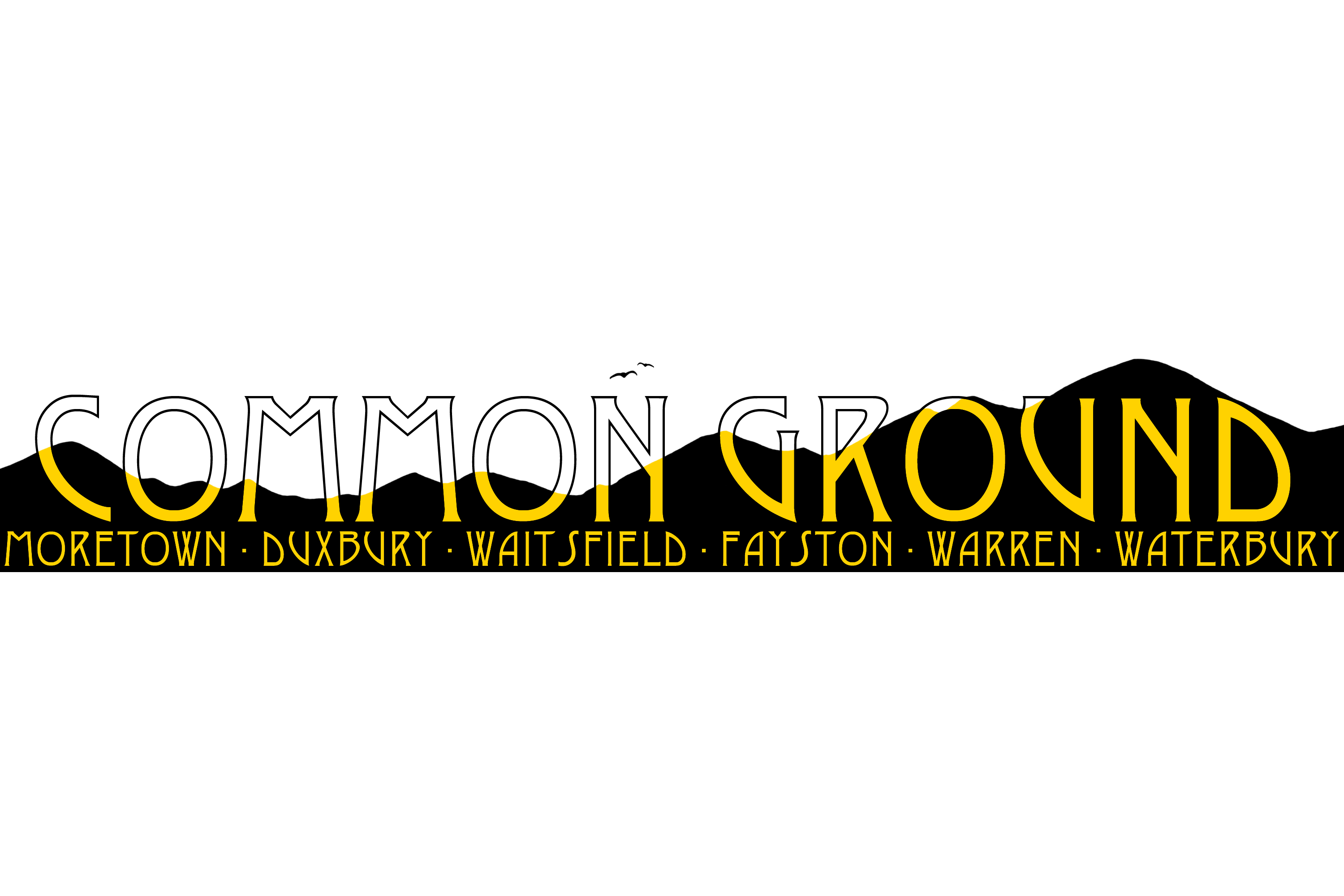VSAC presents Aspirations at Harwood

The VSAC Aspirations steering committee
VSAC ASPIRATIONS
The senior survey is a biennial form that Harwood graduates fill out to gauge how the school is doing in terms of post-secondary educational pursuits. Past senior surveys at Harwood found that “nearly 50% of students decided they were going to continue their education after high school before they even got to the 9th grade.” All students reported that they’d done something to prepare for college, like saving money, working more and reducing their spending.
“I thought it was interesting [that] there was a question about when students made up their mind if they wanted to go to college or [not],” said Charlie Flint, a Harwood junior who has been scrutinizing the survey. “[The question was] ‘When did you decide that you weren’t going to go to college?’ for career-based students,” said Flint. “And [many] decided [in the] sixth grade or earlier, which shows that a lot of the decisions are happening before they even get to high school because of where their parents are.”
The Vermont Student’s Assistance Corporation, or VSAC, is a non-profit organization that provides educational information and support to Vermont students pursuing post-secondary education. The VSAC Aspirations Program is focused on closing the gap between first and second-generation students and expanding a school’s capability to offer support to every student in their sundry plans for post-high-school life.
The data obtained by VSAC found that 74% of Harwood students whose parents had attended college went to college while only 48% of students whose parents hadn’t attended college did. Funded by the Vermont Legislature, the program encourages all students to have a plan for their post-secondary life, whether that be pursuing higher education, a trade school, military or other options.
VSAC selected Harwood from a pool of 10 other eligible schools as the school showed one of the most significant discrepancies in the senior survey. Now that Aspirations has been instituted, its first year will be focused solely on data collection.
“A big message is that there’s a range of options for life after high school,” said Ellen Bagnato, school specialist with VSAC. “There’s no one right answer for everybody and we all need to grow our ability to support and to celebrate all options for life after high school.”
VSAC developed the Aspirations program with “more than 50 years of experience working with schools in Vermont,” according to their website. VSAC will involve school leadership, staff, families and students to achieve their goal of teaching career and college readiness and planning
Aspirations will provide families and students with the necessary materials to gain a greater understanding of opportunities available to them following graduation. “It’s important that the school gives resources to kids,” said Flint. “But I think it’s even more important to give homes the resources to talk to their kids about it earlier, because that’s really when people make up their minds.”
 Charlie Flint
Charlie Flint
THE SENIOR SURVEY
“I really enjoy math and analyzing statistics,” said Flint. “I’ve gone over [the senior survey] several times. There’s a lot of questions about the education they got in high school and the information they got from their parents about pathways after high school, like college or career-based things.”
“An example is ‘Have you talked to your parents about paths after high school?’ Or, ‘Did your high school provide learning and skills for work and college?’ There are results from 2018 and 2021.” Since the entire state of Vermont takes the senior survey, Harwood is able to compare its results with the statewide average to see where things are doing well, and where things could be doing better.
Currently, the senior survey is a task to pick apart. “The data is really dense and hard to understand, because of the response rate,” said Flint. “Not everybody takes it. So it’s difficult to draw conclusions because there’s a big chunk of students who just didn’t take it. I’m trying to [organize] the information in a way that teachers, students and community members can understand so that we can all reflect on what our community is like.”
“[Aspirations is] a four-year program,” said Flint. “Hopefully, VSAC will improve how Harwood teaches students about different pathways, but also [go] into the community and homes and make pathways more accessible and people more knowledgeable.”
WHAT’S NEXT
“Harwood is in, for the most part, a pretty well-off community, and I think we can be blind to the hardships that prevent families and communities from moving forward to being economically successful and independent,” said Bagnato. “Aspirations aims to do that at a very basic level, working with students and educators to make people more aware of a wide array of options that are going to allow students and families to be more successful and have economic independence and equity.”
Bagnato’s role is “to guide the process of expanding post-secondary planning opportunities for all Harwood students.” She will “look at what is and isn’t happening at Harwood and help [the steering committee] create more equitable opportunities. Right now, that involves the creation of a student advisory board [whose] purpose is to bring more student voices to the project.”
The steering committee is a coalition of “teachers, community members, principals, students and counselors,” said Bagnato. Its membership includes Tara Kelly, Brian Wagner, Sally McCarthy, Maggie Weintraub, Rachael Potts, David Rivera, Chloe Joslin, Ed Rooney, Peter Pomerantz, Meg McDonough and Laurie Greenberg.
Harwood is the first Aspirations school that has a student advisory board, part of a redesign of the program VSAC executed over the past few years. Currently, its membership, Chloe Joslin, Elaine Pan, Tina Pan, and Grant McCracken, are tackling the “creation of a survey to gather information from parents and community members about what adults and the community see as being needed to help students plan for life after high school.” This student advisory board is always looking for new members, and they invite any interested student to contact them directly to learn more.
Charlie Flint is working independently from the student advisory board, instead focusing on the senior survey to make its data more understandable.
Bagnato wants it to be clear that Aspirations won’t mean more work for teachers. “I’m very sensitive to the fact that teachers can sometimes be asked to be masters of everything,” she said. “Aspirations aims to have teachers use their content and the relationships they have with students to open the door to talking and helping students plan for life after high school.”
Aspirations’ goal is to provide the mentality that high school students should not aim to just get through high school, but should rather utilize their time in high school to prepare themselves for whatever comes next. “Just like the goal of elementary school is to help you prepare for middle school, and in middle school you’re preparing for high school,” said Bagnato. “It’s really [about] changing the mindset of the purpose of high school.”
The first year of Aspirations’ presence at Harwood is to formulate a cohesive action plan, one that fits into Harwood’s culture and community. The programs’ first steps are to investigate curricular integrations and leadership, posing the necessary questions to foster growth: “What do we need to do to make sure that students and families are informed about their options?” said Bagnato. “How are we integrating post-high school planning into the curriculum? Do you talk about careers in your classroom? We look at multiple pathways like internships and dual enrollment classes and how available and known those opportunities are.”
The specifics of what the program will look like for Harwood’s future depend on the steering committee. “It really depends on the steering committee [and] how they want to focus on those areas and what they want to do,” said Bagnato. “[In our] next meeting, we’re going to be looking at survey data that students took in teacher advisory and[use] other pieces of data to help us plan and develop an action plan.”
“When we come back in the new year, we will get down to the nitty-gritty work of building the school’s capacity to support all students as they plan for life after high school,” said Bagnato. “Then we start implementing it in the fall of the 2022-2023 school year.”
In the following years, Aspirations will be an unobtrusive, helpful asset to the welfare of the school, providing students with information and support to pursue their wildest dreams.


